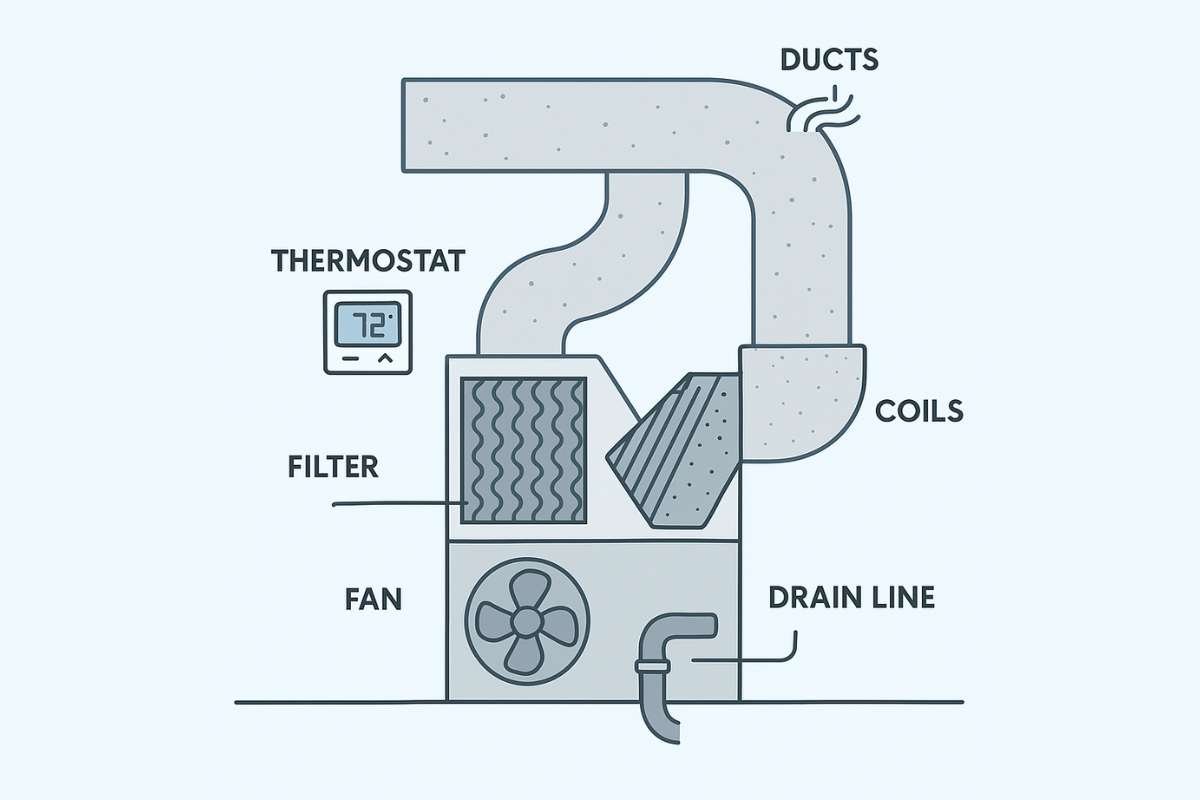Do you want your business to grow exponentially?
If you are nodding your head, we have a plan for you. Imagine a proven strategy that can take your business to new heights. Imagine a plan that will attract a flood of qualified leads. And above all, imagine a method that converts them into loyal customers.
What if I told you that this game-changing approach is within your grasp?
Welcome to the world of effective funnel strategy. In today’s fast-paced digital landscape, mastering the art of funneling is no longer an option but a necessity. So, what are you waiting for? Join us to discover the road map to scaling business with precision and efficiency. The time to supercharge your growth starts now.
What Makes a Funnel Strategy Effective?
It’s all about understanding your audience and market. You need to create a clear and compelling value proposition. This will make them want to learn more about your product and service. You need to design a funnel that guides them through the buyer’s journey step by step.
Sounds complicated, right?
It doesn’t have to be. With the right tools and resources, you can create an effective funnel strategy that will help you scale your business. Hence, we will frame an effective funnel strategy and explain each step in detail. Keep reading.
Attract the Right Audience and Identify the Target Market

In the world of business, attracting the right audience and identifying your target market is the foundation of an effective funnel strategy. Ask yourself the three main questions:
- Who are you trying to reach?
- What are their needs and pain points?
- What motivates them to buy?
By pinpointing your target market, you can focus your efforts on those most likely to be interested in your offer. It’s like shining a spotlight on the perfect audience. This will ensure that your message reaches the right ears.
Now, let’s talk about their needs and pain points. When you offer solutions for your audience’s struggles, you become a guiding light in the sea of options.
But what truly motivates your audience to buy? This is the age-old question that every business seeks to answer. Is it the desire for convenience, the pursuit of a better lifestyle, or the need for a solution to a pressing problem? You can understand the motivation behind their buying decisions. With this, you can align your marketing strategies and funnel to tap into those desires and provide compelling reasons for them to take action.
Create Compelling Content and Lead Magnets
First, Impressions matter.
When your audience encounters your brand for the first time, they make split-second judgments about whether you have something valuable to offer.
So, ask yourself: Does your content leave a lasting impact? Does it entice and engage?
But it doesn’t stop here. Your content must not only captivate but also provide value. Think about it. In the world of overflowing information, why would someone invest their precious time in what you have to say? You establish yourself as a trusted authority by providing high-quality and valuable content. You become the go-to resource, the beacon of knowledge that your audience craves.
Talking about the lead magnets these are irresistible temptations that compel your audience to take action. They offer a solution, a shortcut, or exclusive access that addresses a specific pain point or desire. By creating lead magnets that align with your audience’s needs and aspirations, you attract their attention and establish a connection. This is a bridge between their desires and your offerings.
Here is an example of a compelling lead magnet:
- A free ebook on a topic that is relevant to your target audience.
- A free trial of your product or service.
- A free consultation with an expert in your field.
Email Marketing Campaigns to Engage and Nurture Leads

Here is how email marketing campaigns help to engage and nurture leads for an effective funnel strategy:
- Email marketing is a cost-effective way to reach a large audience.
- It is a personalized way to communicate with your leads. You can use email marketing to send targeted messages to your leads.
- This is a trackable way to measure your results. You can track your email campaigns’ open rates, click-through rates, and conversion rates.
Here are some tips for using email marketing to engage and nurture leads:
- Segment your list: You can segment your list. This can be based on their interests, demographics, and past interactions with your brand. This will also allow you to send targeted messages more likely to resonate with your leads.
- Personalize your message: Use the names of leads in your emails. Refer to their past interactions with your brand. This will show your leads that you are paying attention to them and value their business.
- Offer Value: Your emails should always offer value to your leads. This could be in the form of exclusive content, discounts, or other offers.
- Call-to-action: Tell your leads that you will be available for further interactions. Tell them what you want them to do. This includes subscribing to your email list, downloading your lead magnet, or purchasing.
- Track your results: This will help you see what is working and what is not so that you can optimize your campaigns for better results.
Use Sales Psychology to Increase Conversions
At its core, sales psychology studies what drives people to make buying decisions. It’s like unraveling the hidden code that influences our choices, preferences, and actions. There are plenty of sales psychological factors that influence decision-making, including:
- Fear of missing out (FOMO): One of the most powerful motivators. Customers feel compelled to take action before they lose out on an opportunity.
- Social Proof: People are more likely to buy something if they see that others are buying it too.
- Scarcity: Exclusivity and limited supply attracts the audience. People will buy more if they think the service or the product is scarce.
- Trust and credibility: People are likely to buy from businesses they trust. Use social proof, testimonials, case studies, and endorsements to establish credibility. This shows that others have had positive experiences with your product or services.
- Appeal to emotions: When your leads feel an emotional connection, they are more inclined to convert. Craft your marketing messages to evoke emotions that align with your audience’s desires.
Create a Clear and Compelling Value Proposition
Your value proposition is your secret weapon. A good value proposition should answer the following questions:
- What makes your product or service unique?
- Why should people choose you over your competitors?
- What benefits will they gain from using your product or service?
Here are some tips for creating a clear and compelling value proposition:
- Start by identifying your target audience: Who are you trying to reach? What are their pain points and needs?
- What makes your product unique? What sets you apart from your competitors?
- What benefit will people gain from using your product or service?: Be specific and quantify the benefits whenever possible.
- Keep it short and to the point: People should be able to understand your value proposition in a few seconds.
- Use clear and concise language: Avoid jargon and technical terms.
- Make it easy to remember: People should be able to remember your value proposition even after they’ve read it.
- Test and iterate: Once you have a draft of your value proposition, test it with your target audience and see how they respond. Make changes accordingly.
Design a Funnel that Guides You Through the Buyer’s journey

Your funnel is like a map. It charts a clear path for your leads to follow. Its strategic framework aligns with each stage of the buyer’s journey, ensuring no step is missed, and no opportunity is lost. Let’s explore how it works:
- Awareness stage: At this stage, your leads become aware of the issue they face. Your funnel should provide captivating content that educates and creates awareness. Grab their attention with compelling blog posts, informative videos, or engaging social media content.
- Consideration stage: Your funnel should guide them towards considering your product or service as the ideal solution. At this stage, provide in-depth guides, comparison articles, or case studies that showcase your unique benefits.
- Decision stage: Your leads are ready to decide and take action here. Your funnel should provide the final nudge. Thus, making it easy to say “yes” to your offering.
Tracking, Testing, Optimizing, and Adjusting Your Effective Funnel Strategy
Here’s why tracking, testing, optimizing, and adjusting your effective funnel strategy is crucial for you:
- Tracking: This information can help to identify areas where you can improve your conversion rates.
- Testing: This can help you determine what is most effective in converting leads into customers.
- Optimizing: This could involve changing your content, website, or marketing campaigns.
- Adjusting: This means changing to keep up with changes in the market or your target audience.
Final Takeaway
A effective funnel strategy is a powerful tool that can help you scale your business. But you must be patient, persistent, and willing to change to achieve your business goals.
Hence, it’s time to unleash the full potential of your business and take a journey toward greatness.


















